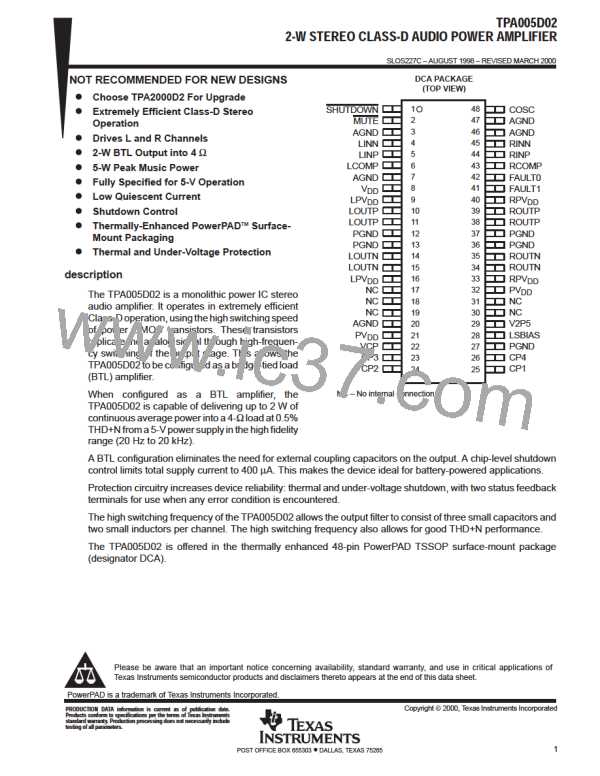TPA005D02
2-W STEREO CLASS-D AUDIO POWER AMPLIFIER
SLOS227C – AUGUST 1998 – REVISED MARCH 2000
APPLICATION INFORMATION
losses in a real-world class D amplifier
Losses make class D amplifiers nonideal, and reduce the efficiency below 100%. These losses are due to the
output transistors having a nonzero R , and rise and fall times that are greater than zero.
DS(on)
The loss due to a nonzero R
nonswitching times, when the transistor is ON (saturated). Any R
is called conduction loss, and is the power lost in the output transistors at
DS(on)
above 0 Ω causes conduction loss.
DS(on)
Figure 17 shows an H-bridge output circuit simplified for conduction loss analysis and can be used to determine
new efficiencies with conduction losses included.
V
DD
= 5 V
R
0.31 Ω
5 MΩ
5 MΩ
R
DS(off)
DS(on)
R
L
4 Ω
R
0.31 Ω
R
DS(on)
DS(off)
Figure 17. Output Transistor Simplification for Conduction Loss Calculation
The power supplied, P , is determined to be the power output to the load plus the power lost in the transistors,
SUP
assuming that there are always two transistors on.
P
L
Efficiency
P
SUP
2
I R
L
Efficiency
2
2
I
2R
I R
DS(on)
L
R
L
Efficiency
2R
R
DS(on)
L
Efficiency
Efficiency
95% at all output levels R
87% at all output levels R
0.1, R
4
DS(on)
DS(on)
L
0.31, R
4
L
17
POST OFFICE BOX 655303 • DALLAS, TEXAS 75265

 TI [ TEXAS INSTRUMENTS ]
TI [ TEXAS INSTRUMENTS ]